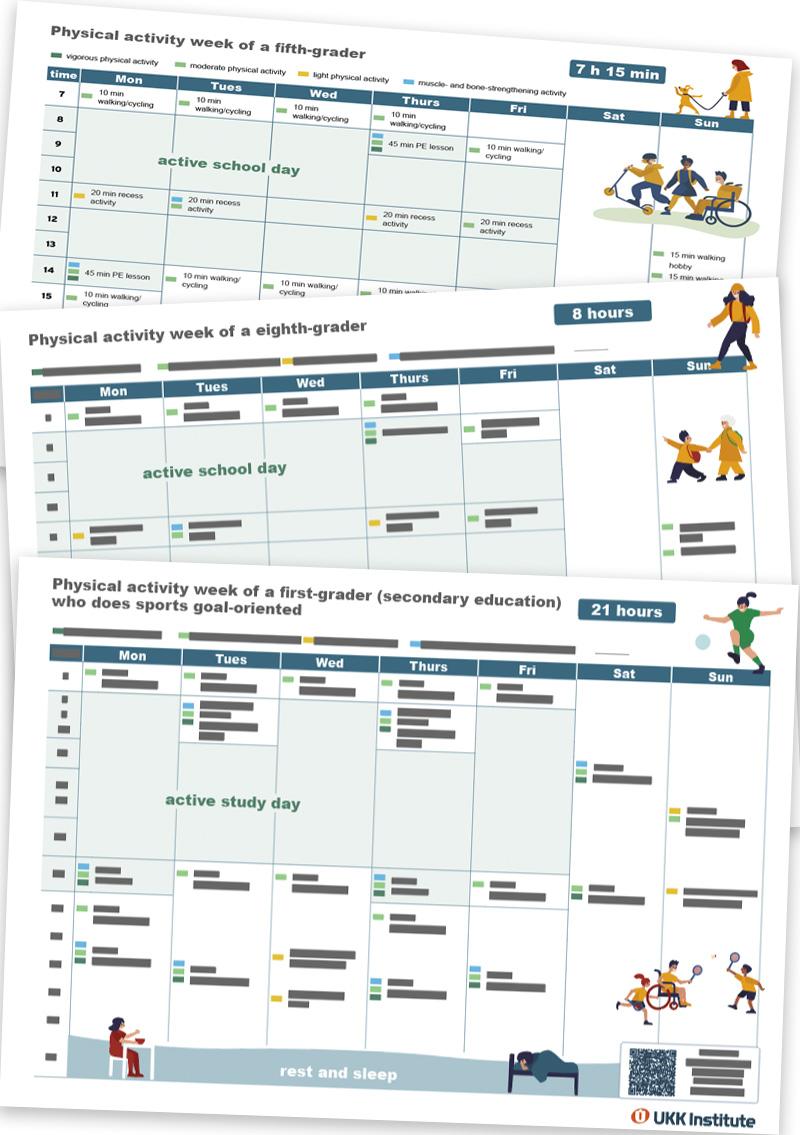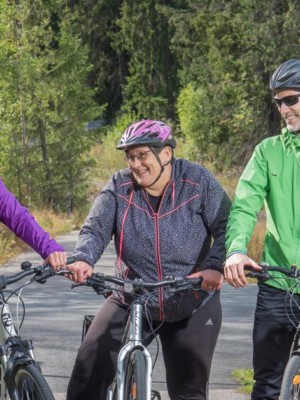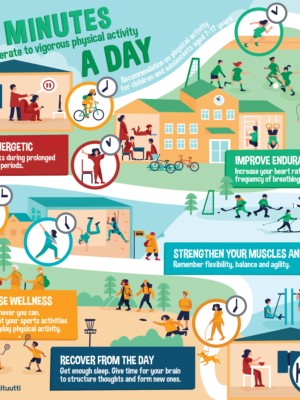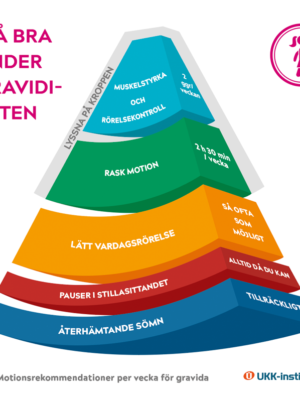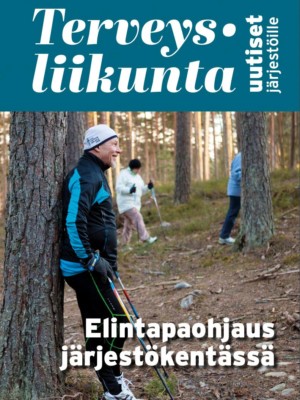Physical activity weeks for children and youth
Download for free
Kuvaus
The images present how physical activity can be accumulated during a week for a fifth grade, an eighth grade, or a secondary education student. There are examples for goal-oriented athletes and students who are physically active self-directed. The images can be used by, for example, teachers, school nurses and coaches.
See images:
- Physical activity week for a fifth grader
- Physical activity week for a fifth grader who does sports goal-oriented
- Physical activity week for a eighth grader
- Physical activity week for a eighth-grader who does sports goal-oriented
- Physical activity week for a first-grader (secondary education)
- Physical activity week for a first-grader (secondary education) who does sports goal-oriented
Different colors at the top of the images describe the perceived intensity of physical activity. Dark green represents vigorous physical activity, light green moderate physical activity, yellow light physical activity and turquoise muscle- and bone-strengthening physical activity.
Different colors at the same physical activity session means that the physical activity contains activities with variable intensities and types. Turquoise color signifies the importance of a versatile warm-up as a preparatory action and preventive measure against physical activity-related injuries. The neuromuscular training warm-up should include aerobic, agility, strength, and balance exercises, and the duration of the warm-up should be approximately 15 minutes at a time.
The recommended amount of moderate and vigorous physical activity is included in the total amount of physical activity of a child or an adolescent who is physically active self-directed. Both light, moderate and vigorous physical activity are included in the total amount of physical activity of a child or an adolescent who does sport goal-oriented. Children and youth who do sports goal-oriented should be physically active at least 20 hours a week in various forms. Physical activity should be versatile so that the different characteristics develop evenly. Versatile exercise is also important in preventing injuries during physical activity.
Publisher: The UKK Institute for Health Promotion Research (UKK Institute) 2024
Content Specialists: Pauliina Husu and Mari Leppänen, UKK Institute
Implementation: Pauliina Husu, Mari Leppänen, Teea Mäkinen, Raija Oksanen and Tuula Äyräväinen / UKK Institute
UKK Institute has produced the images with project funding from the Ministry of Education and Culture.
Utilise also the following materials on the physical activity recommendation for children and adolescents:
- brochure (pdf)
- presentation (pdf)
- animation video
- presentation material for lower secondary school and upper secondary education (pdf)
- online application
- diary for monitoring physical activity and sleep (pdf)
- plan for improving physical activity or sleep (pdf)
- main images in Finnish, Swedish and English (pdf)
Read more about the physical activity recommendation for children and adolescents on our website.

